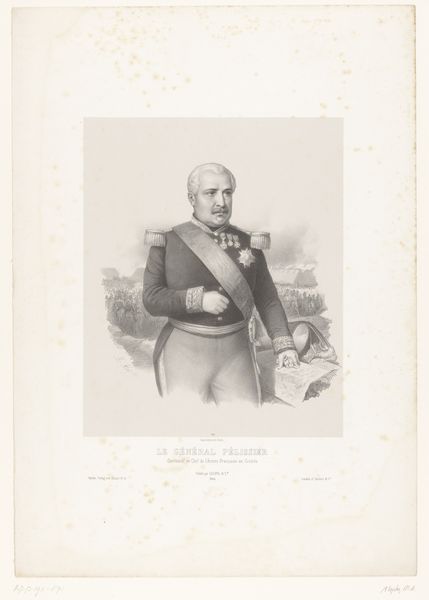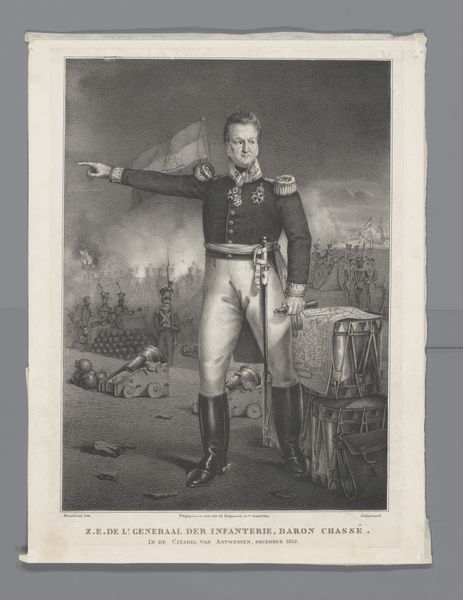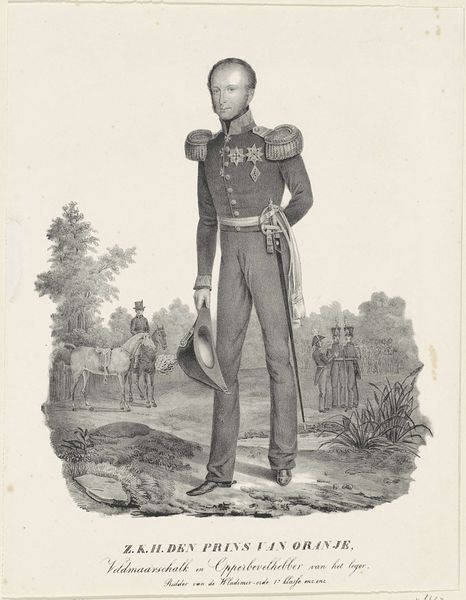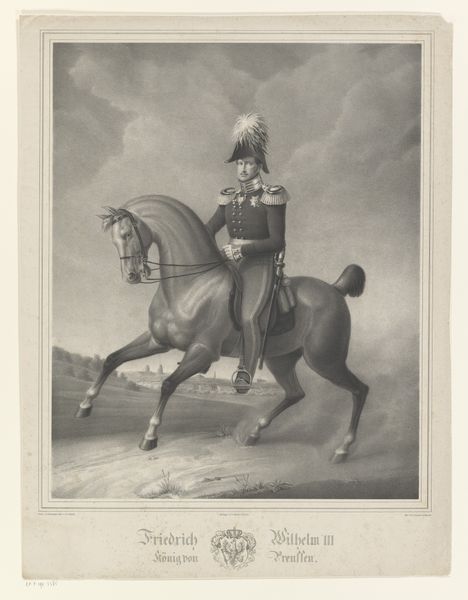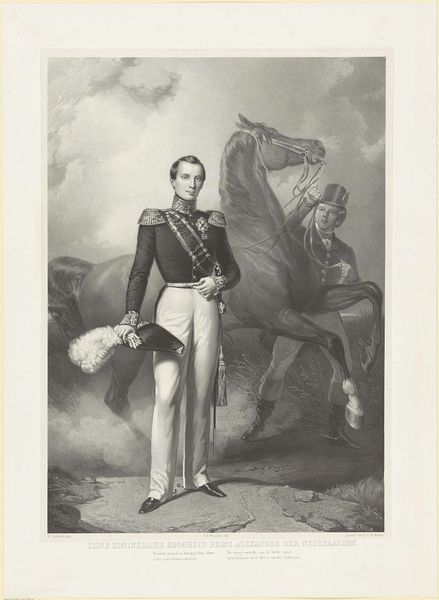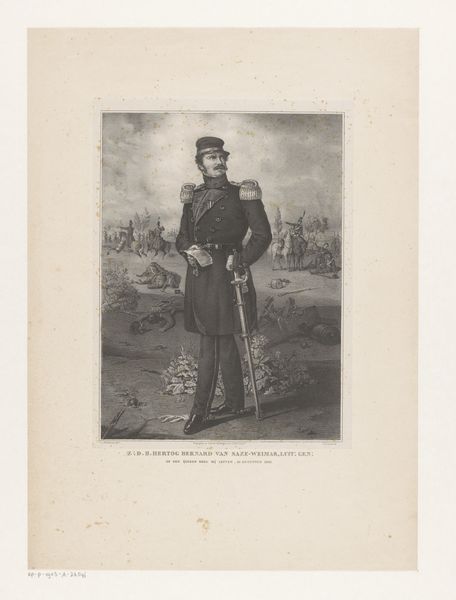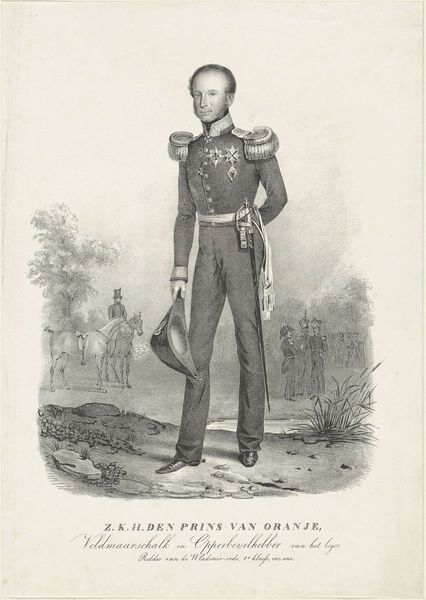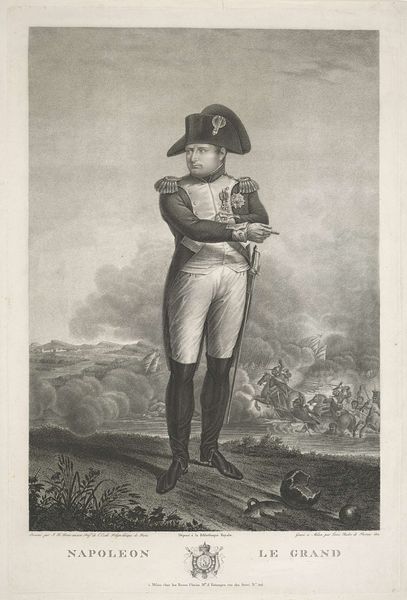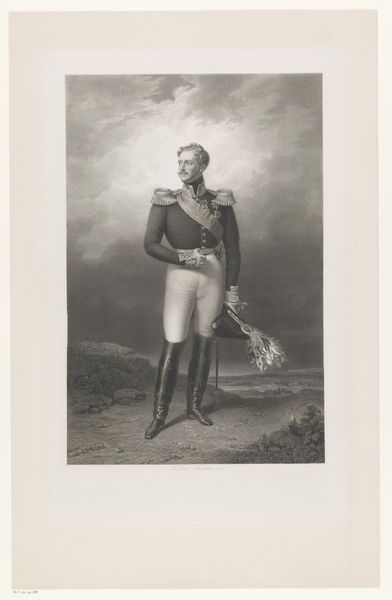
His Majesty Nicolas I, Emperor of all Russia, Camp Vosnessensk, October 6, 1837 1842 - 1845
0:00
0:00
drawing, lithograph, print, paper
#
portrait
#
drawing
#
lithograph
# print
#
paper
#
framed image
#
romanticism
#
history-painting
#
academic-art
Dimensions: 359 × 258 mm (image); 534 × 358 mm (sheet)
Copyright: Public Domain
Curator: Talk about a mood. It's dark, windswept… vaguely menacing, like a Russian novel about to begin. Editor: Well, considering the subject, maybe that tracks. This lithograph by Auguste Raffet, created between 1842 and 1845, depicts Nicholas I, Emperor of Russia, at Camp Vosnessensk. Curator: That hat! It's magnificent and utterly ridiculous at the same time. All that plumage – a tiny explosion right above his head. Makes you wonder if absolute power always comes with a side of absurd fashion choices. Editor: Absolutely. Beyond the flamboyant details, it’s important to recognize the context of imperial portraiture. Representations like this served as powerful tools for projecting authority, divine right, and national identity. Notice his posture – ramrod straight, projecting strength and control. It reinforces a specific image of leadership. Curator: It’s funny, isn’t it? How something hand-drawn, almost delicate in its detail – it IS a lithograph, after all – can portray such steely determination. But the overall composition contributes too; Nicholas dominates the foreground, those soldiers receding behind him, the buildings… almost ghosts on the horizon. He IS the picture. Editor: And that framing supports his ideology, which was built on autocracy, orthodoxy and nationality – all things deeply entangled with the image projected here. He centralized power, suppressed dissent. These "ghosts on the horizon" represent all that he surveils. This portrait really becomes propaganda, meticulously constructed to uphold that power. Curator: Propaganda can be so darn pretty sometimes, can't it? I'm drawn to that landscape in the back, but thinking of all those serfs toiling under his rule sort of deflates the artistic enjoyment. Although, maybe THAT is its artistic statement after all – all glittering surface, cold center. Editor: Precisely. This piece serves as a potent reminder that aesthetics and politics are often intertwined. Questioning these projections is crucial to deconstructing the narratives they propagate. Curator: Right. Next time I want my portrait done, remind me to ask the artist to make me look empathetic rather than powerful, unless I secretly yearn to be a despot. Thanks for untangling this for me, your perspective certainly gave it deeper complexity! Editor: And thank you! Reflecting on how historical figures like Nicholas sought to be perceived—and interrogating the power dynamics inherent in such depictions—is, for me, profoundly worthwhile.
Comments
No comments
Be the first to comment and join the conversation on the ultimate creative platform.

